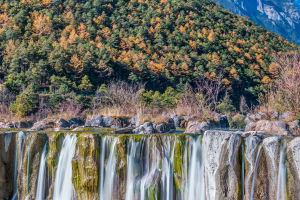The aurora, also known as the polar lights, is a spectacular natural phenomenon that occurs in high magnetic latitude regions of the Earth. It is a beautiful display of colored lights that appear near the Earth's north and south poles, caused by the flow of charged particles from the sun into the Earth's magnetic field.
The aurora is caused by the excitation of molecules in the upper atmosphere by a stream of high-energy charged particles from the Earth's magnetosphere.
It often appears in the latitudes close to the Earth's magnetic poles over the region, with shapes that are generally band-shaped, arc-shaped, curtain-shaped, or radial.
These shapes are sometimes stable, and sometimes they change continuously. The generation of the aurora requires three conditions: atmosphere, magnetic field, and high-energy charged particles, all of which are indispensable.
The aurora is not unique to Earth, as it also appears on some other planets with magnetic fields in the solar system. The high-energy particles are turned to the polar regions due to the effect of the geomagnetic field, making the aurora visible in high magnetic latitude regions.
The aurora often appears within a range of about 25°-30° from the magnetic pole, which is known as the auroral zone. The range of geomagnetic latitude of 60°-90° is called the auroral zone, the area between 45°-60° of geomagnetic latitude is called the weak auroral zone, and the area of geomagnetic latitude lower than 45° is called the micro-auroral zone.
To observe the Northern Lights, the most promising places are between 66° and 69° north latitude, including northern Alaska, northern Canada, most of Greenland, and northern Scandinavia.
Most auroras appear 90-130 kilometers above the earth's north and south poles, and the cloud height is generally below 12 kilometers. Thus, if the aurora is covered by clouds, it cannot be observed.
Due to the distance between the aurora and the observer and the weakness of the light source, the aurora we observe is generally light green. Only when the sun is very active can we observe dark green, red, or purple auroras?
In addition to solar activity, changes in the Earth's magnetosphere may also affect the appearance of auroras. For example, auroras may appear at lower latitudes when Earth's magnetic field is affected by external factors such as solar storms or earthquakes.
The aurora is not only a beautiful natural phenomenon but also of great significance to scientific research. By observing parameters such as the frequency, color, and shape of the aurora, scientists can study solar activity, the Earth's magnetic field, and the atmosphere, as well as understand the physical properties and evolution of planets.
However, many mysteries surrounding the aurora remain unsolved. For example, why do auroras usually appear at higher latitudes, and why do the shapes and colors of the aurora change with time and place? These issues still need us to continue exploring and studying.


